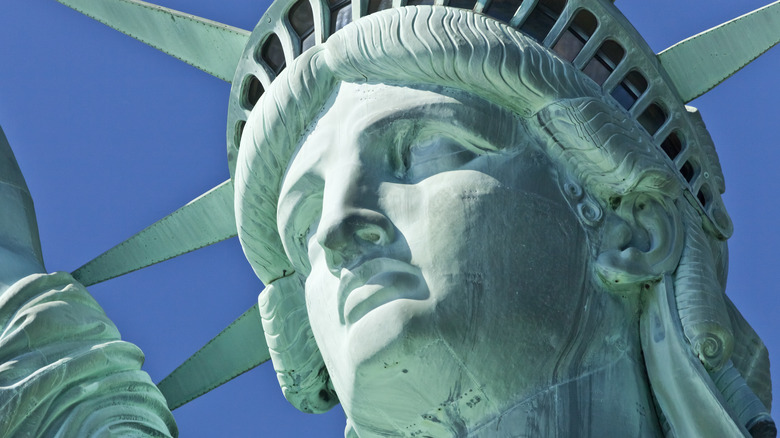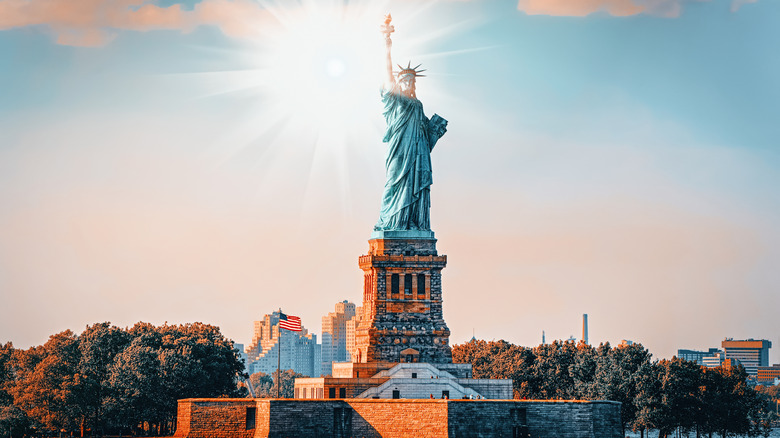The Reason The Statue Of Liberty Nearly Wasn't Built
The Statue of Liberty is one of the most recognizable landmarks in the world, a symbol of the United States and a beacon of hope to the millions of immigrants who crossed the Atlantic in the 19th and 20th centuries to start new lives on American shores. The statue was a gift from France and required some cooperation between the two countries to be built, and difficulties on the American side meant that one of the most iconic statues in history almost wasn't erected (via History).
While France was in charge of constructing the copper woman, the United States was responsible for building the pedestal she would stand upon. The pedestal is where plans hit a snag. By the time the statue arrived in the Big Apple in 1885, the pedestal was still under construction and funding was looking tight. Congress would not agree on a spending package, and the donations of wealthy Americans was all that was supporting the project. For a while, it looked like the whole thing would be cancelled.
Designers had big plans for the pedestal
According to Dozr, American architect Richard Morris Hunt was charged with finding a location for the statue and designing the pedestal on which she would stand. Hunt settled on Bedloe's Island, now renamed Liberty Island, in New York City's harbor, and had big plans for the pedestal, which was originally supposed to be 114 feet tall. (For comparison, the statue itself is only 111 feet tall.) He was eventually talked down to 87 feet, but even so, in 1884 the project ran out of money and, just as important, public interest.
Newspaper publisher Joseph Pulitzer was interested in the project and wrote about it in his paper in an effort to reignite interest in the statue. He argued that it was not a gift from millionaires of one country to another, but from the people of France to the people of the United States (via History). With Congress and New York governor Grover Cleveland unwilling to agree on providing funds for the pedestal, it was Pulitzer's call to action that got the project over the line. Some 120,000 people donated the necessary $100,000 for the pedestal's completion (though History points out that it's unclear if Pulitzer himself contributed), and "Liberty Enlightening the World" (the statue's actual name) was officially inaugurated in 1886. She would oversee 12 million immigrants coming to America, and still stands as one of the country's most instantly recognizable icons.

